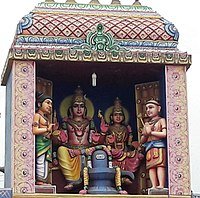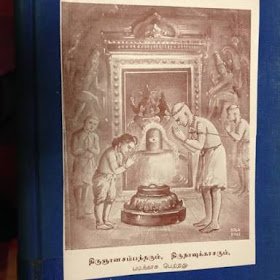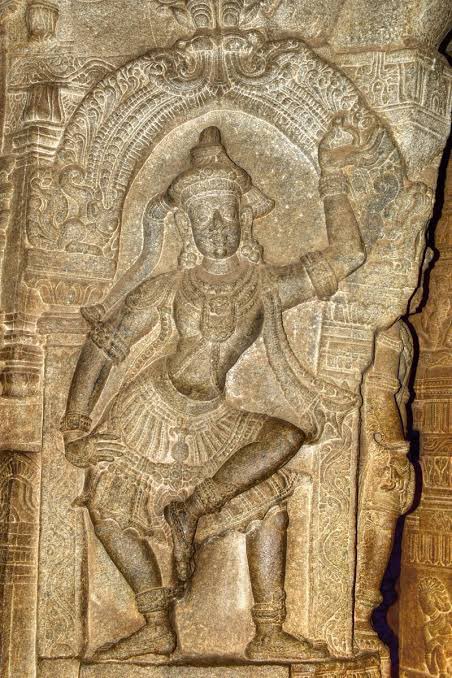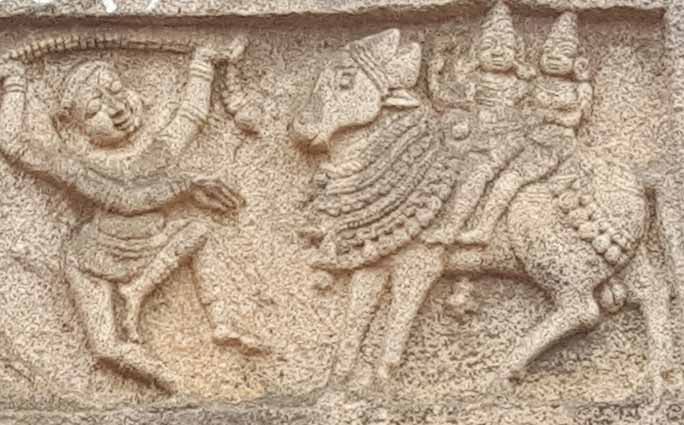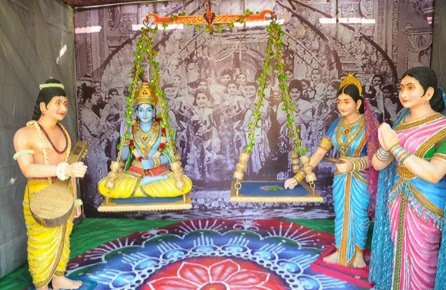More from Billy Bostickson 🏴👁&👁 🆓
1/x Fort Detrick History
Mr. Patrick, one of the chief scientists at the Army Biological Warfare Laboratories at Fort Detrick in Frederick, Md., held five classified US patents for the process of weaponizing anthrax.
2/x
Under Mr. Patrick’s direction, scientists at Fort Detrick developed a tularemia agent that, if disseminated by airplane, could cause casualties & sickness over 1000s mi². In a 10,000 mi² range, it had 90% casualty rate & 50% fatality rate

3/x His team explored Q fever, plague, & Venezuelan equine encephalitis, testing more than 20 anthrax strains to discern most lethal variety. Fort Detrick scientists used aerosol spray systems inside fountain pens, walking sticks, light bulbs, & even in 1953 Mercury exhaust pipes

4/x After retiring in 1986, Mr. Patrick remained one of the world’s foremost specialists on biological warfare & was a consultant to the CIA, FBI, & US military. He debriefed Soviet defector Ken Alibek, the deputy chief of the Soviet biowarfare program
https://t.co/sHqSaTSqtB
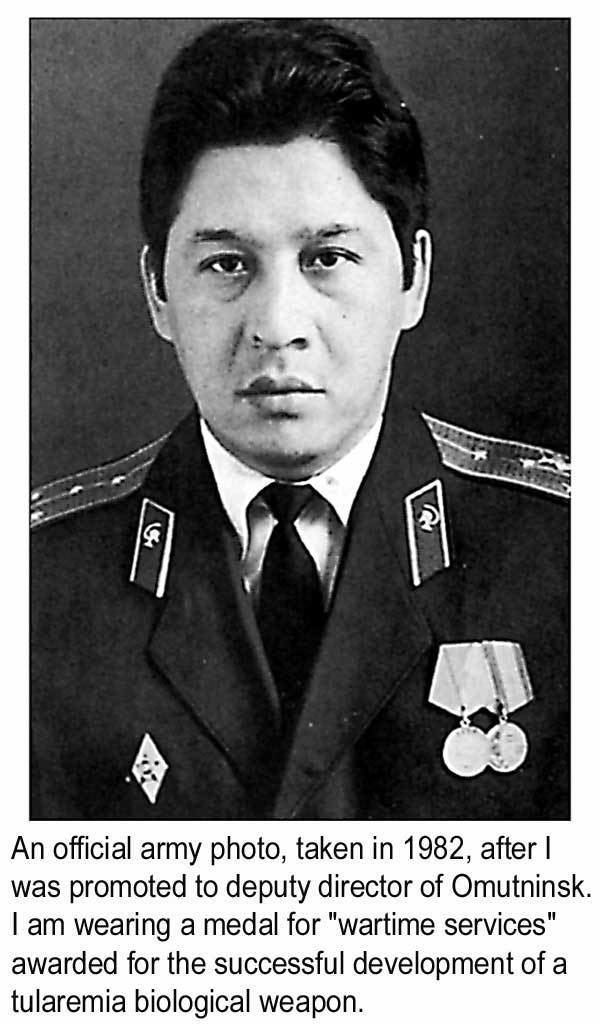
5/x Back in Time
In 1949 the Army created a small team of chemists at "Camp Detrick" called Special Operations Division. Its assignment was to find military uses for toxic bacteria. The coercive use of toxins was a new field, which fascinated Allen Dulles, later head of the CIA

Mr. Patrick, one of the chief scientists at the Army Biological Warfare Laboratories at Fort Detrick in Frederick, Md., held five classified US patents for the process of weaponizing anthrax.
2/x
Under Mr. Patrick’s direction, scientists at Fort Detrick developed a tularemia agent that, if disseminated by airplane, could cause casualties & sickness over 1000s mi². In a 10,000 mi² range, it had 90% casualty rate & 50% fatality rate

3/x His team explored Q fever, plague, & Venezuelan equine encephalitis, testing more than 20 anthrax strains to discern most lethal variety. Fort Detrick scientists used aerosol spray systems inside fountain pens, walking sticks, light bulbs, & even in 1953 Mercury exhaust pipes

4/x After retiring in 1986, Mr. Patrick remained one of the world’s foremost specialists on biological warfare & was a consultant to the CIA, FBI, & US military. He debriefed Soviet defector Ken Alibek, the deputy chief of the Soviet biowarfare program
https://t.co/sHqSaTSqtB

5/x Back in Time
In 1949 the Army created a small team of chemists at "Camp Detrick" called Special Operations Division. Its assignment was to find military uses for toxic bacteria. The coercive use of toxins was a new field, which fascinated Allen Dulles, later head of the CIA

1. Some useful, albeit not fully developed, critiques of:
“The Origins of SARS-CoV-2: A Critical Review"
https://t.co/C9TyRyqHUr
have just been published here:
https://t.co/qCmzGCzRxn
by members of DRASTIC & others
@angoffinet @BahulikarRahul @MonaRahalkar @gdemaneuf
2. A refreshing contrast to the so-called "expert reactions" found here, including from one of the authors of the review (Prof David Robertson)!
"expert reaction to a preprint reviewing the evidence on the origins of SARS-CoV-2"
https://t.co/6kG6rstweP
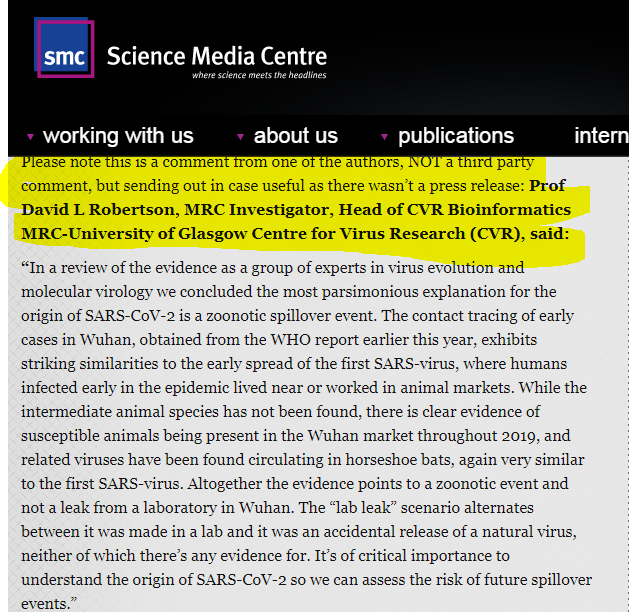
3. Peter Gutierrez points out in his response that 4 of the authors of “The Origins of SARS-CoV-2: A Critical Review”, also wrote “Proximal Origin of SARS-COV-2”.
His critique focuses on:
1. RaTG13
2. Enhanced adaptation to the human host
https://t.co/eW8b2iK5xe
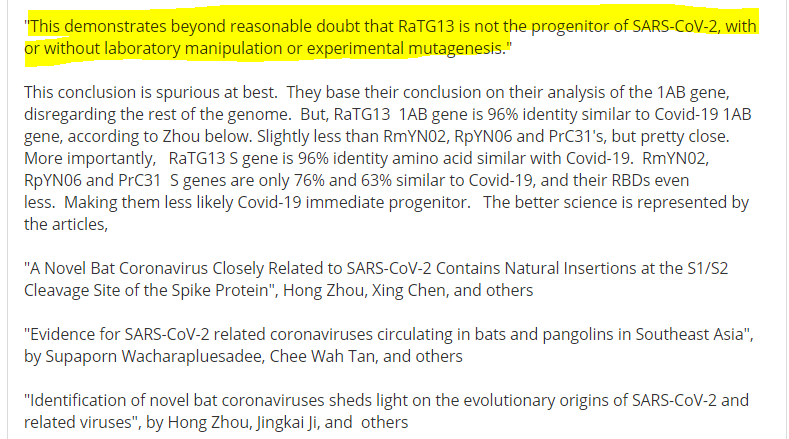
4. As to be expected, Sydney University and its iconic virologist, Eddie Holmes, who is "not available for interview", are crowing over this biased review
https://t.co/xrjpN1NxpO
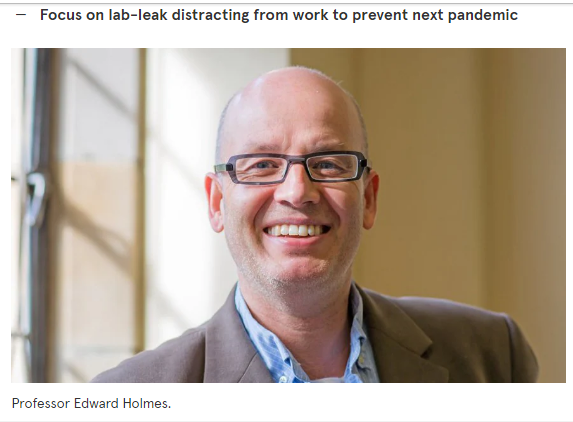
This review contains elementary errors as exposed here:
1. https://t.co/YJ50huifly
one of the authors (Stuart Neil) then claimed
"Didn’t N501Y come up in ACE2 TG mice too?
https://t.co/HscNSEKdrZ
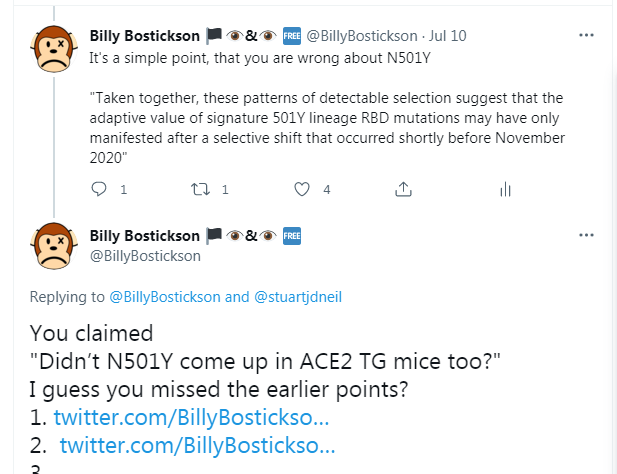
“The Origins of SARS-CoV-2: A Critical Review"
https://t.co/C9TyRyqHUr
have just been published here:
https://t.co/qCmzGCzRxn
by members of DRASTIC & others
@angoffinet @BahulikarRahul @MonaRahalkar @gdemaneuf
2. A refreshing contrast to the so-called "expert reactions" found here, including from one of the authors of the review (Prof David Robertson)!
"expert reaction to a preprint reviewing the evidence on the origins of SARS-CoV-2"
https://t.co/6kG6rstweP

3. Peter Gutierrez points out in his response that 4 of the authors of “The Origins of SARS-CoV-2: A Critical Review”, also wrote “Proximal Origin of SARS-COV-2”.
His critique focuses on:
1. RaTG13
2. Enhanced adaptation to the human host
https://t.co/eW8b2iK5xe

4. As to be expected, Sydney University and its iconic virologist, Eddie Holmes, who is "not available for interview", are crowing over this biased review
https://t.co/xrjpN1NxpO

This review contains elementary errors as exposed here:
1. https://t.co/YJ50huifly
one of the authors (Stuart Neil) then claimed
"Didn’t N501Y come up in ACE2 TG mice too?
https://t.co/HscNSEKdrZ

All your natural origin friends in one place ;)
— Billy Bostickson \U0001f3f4\U0001f441&\U0001f441 \U0001f193 (@BillyBostickson) July 7, 2021
Origins of SARS-CoV-2: A Critical Reviewhttps://t.co/j4A4rtmi8S
via @Topo_Ligio
Fallacy of the "straw mouse", denying evolution in wild type mice, when the claim is actually that it may have "evolved" in hACE2 mice, NOT wild mice. pic.twitter.com/7LCnSAhw6g
Meat is high in Glycosaminoglycans
(central to coronavirus's ability to attach to host cells)
Beef, pork poultry, seafood are rich in heparan sulfate (glycosaminoglycans), highly charged anchors for SARSCoV2
Meat surfaces critical factors for transmission
https://t.co/yP6lH22OTF
1/5 Science behind that tweet just in case anyone thinks I speak without awareness ;)
Glycosaminoglycans from fresh water fish processing discard - Isolation, structural characterization, and osteogenic activity
https://t.co/fyjac03IuV
SALMON MOUTHS
2/5 Salmon Mouths 2
Characterization of Glycosaminoglycans in Gaping and Intact Connective Tissues of Farmed Atlantic Salmon (Salmo salar) Fillets by Mass
3/5 Why does SARS-COV-2 like meat & seafood?
Glycosaminoglycan binding motif at S1/S2 proteolytic cleavage site on spike glycoprotein may facilitate novel coronavirus (SARS-CoV-2) host cell entry
https://t.co/DpHF1WmxeG
Glycosaminoglycans and
4/5 Glycosaminoglycans
Role of in Infectious Disease
(same authors as above)
https://t.co/3q5dn2Io3Q
Glycosaminoglycans in Infectious Disease
https://t.co/Dep7aJlpLP
Murine Coronavirus with an Extended Host Range Uses Heparan Sulfate as an Entry
(central to coronavirus's ability to attach to host cells)
Beef, pork poultry, seafood are rich in heparan sulfate (glycosaminoglycans), highly charged anchors for SARSCoV2
Meat surfaces critical factors for transmission
https://t.co/yP6lH22OTF
1/5 Science behind that tweet just in case anyone thinks I speak without awareness ;)
Glycosaminoglycans from fresh water fish processing discard - Isolation, structural characterization, and osteogenic activity
https://t.co/fyjac03IuV
SALMON MOUTHS
2/5 Salmon Mouths 2
Characterization of Glycosaminoglycans in Gaping and Intact Connective Tissues of Farmed Atlantic Salmon (Salmo salar) Fillets by Mass
3/5 Why does SARS-COV-2 like meat & seafood?
Glycosaminoglycan binding motif at S1/S2 proteolytic cleavage site on spike glycoprotein may facilitate novel coronavirus (SARS-CoV-2) host cell entry
https://t.co/DpHF1WmxeG
Glycosaminoglycans and
4/5 Glycosaminoglycans
Role of in Infectious Disease
(same authors as above)
https://t.co/3q5dn2Io3Q
Glycosaminoglycans in Infectious Disease
https://t.co/Dep7aJlpLP
Murine Coronavirus with an Extended Host Range Uses Heparan Sulfate as an Entry
1. Thread: RaTG13 Real or Fake?
A Norwegian Scientist @Vehuardo recently claimed RaTG13 is an "authentic virus"
https://t.co/tAXMNTwdhA
This failed to take into account the work of our DRASTIC colleagues & other published analyses.
This thread is a polite attempt to educate.
2. https://t.co/tw606vgHwp
which says RaTG13 doesn't make sense on how it was sequenced, or how the data got so messed up in the lab as to include copy paste mistakes, bat dna, pangolin dna, rice dna, mice dna, & nobody should use it to form conclusions until it's properly vetted
2 (cont)
"sequence is incomplete & provided segment doesn't function. The identified markers suggest partial match basis & actual virus itself as described by the sequence can't functionally exist due to incoherent structures that appear to be the result of sample contamination"
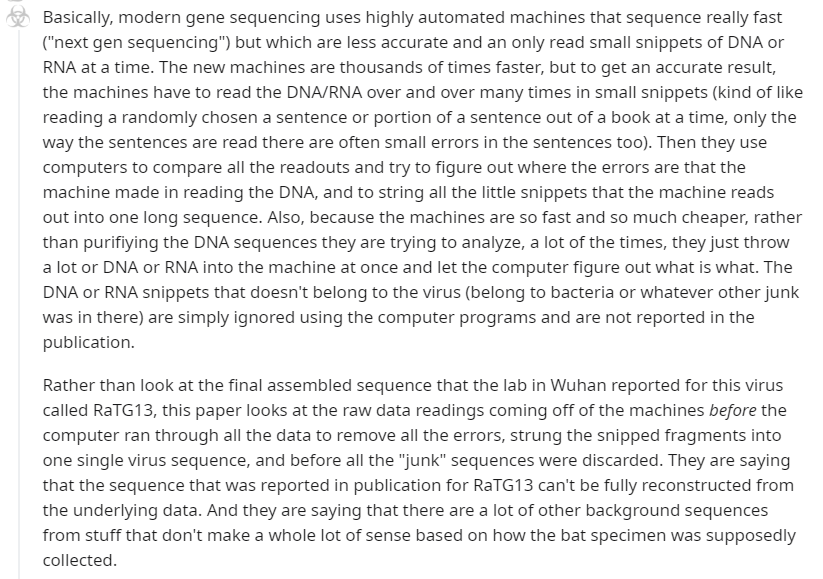
3. RaTG13 integrity is further attacked here:
The Validity of critical pieces of evidence for the natural origin of SARS-CoV-2 is Dubious, and needed to be
4. and here:
Major Concerns on the Identification of Bat Coronavirus Strain RaTG13 and Quality of Related Nature
A Norwegian Scientist @Vehuardo recently claimed RaTG13 is an "authentic virus"
https://t.co/tAXMNTwdhA
This failed to take into account the work of our DRASTIC colleagues & other published analyses.
This thread is a polite attempt to educate.
2. https://t.co/tw606vgHwp
which says RaTG13 doesn't make sense on how it was sequenced, or how the data got so messed up in the lab as to include copy paste mistakes, bat dna, pangolin dna, rice dna, mice dna, & nobody should use it to form conclusions until it's properly vetted
2 (cont)
"sequence is incomplete & provided segment doesn't function. The identified markers suggest partial match basis & actual virus itself as described by the sequence can't functionally exist due to incoherent structures that appear to be the result of sample contamination"

3. RaTG13 integrity is further attacked here:
The Validity of critical pieces of evidence for the natural origin of SARS-CoV-2 is Dubious, and needed to be
4. and here:
Major Concerns on the Identification of Bat Coronavirus Strain RaTG13 and Quality of Related Nature
More from All
https://t.co/6cRR2B3jBE
Viruses and other pathogens are often studied as stand-alone entities, despite that, in nature, they mostly live in multispecies associations called biofilms—both externally and within the host.
https://t.co/FBfXhUrH5d

Microorganisms in biofilms are enclosed by an extracellular matrix that confers protection and improves survival. Previous studies have shown that viruses can secondarily colonize preexisting biofilms, and viral biofilms have also been described.

...we raise the perspective that CoVs can persistently infect bats due to their association with biofilm structures. This phenomenon potentially provides an optimal environment for nonpathogenic & well-adapted viruses to interact with the host, as well as for viral recombination.

Biofilms can also enhance virion viability in extracellular environments, such as on fomites and in aquatic sediments, allowing viral persistence and dissemination.

Viruses and other pathogens are often studied as stand-alone entities, despite that, in nature, they mostly live in multispecies associations called biofilms—both externally and within the host.
https://t.co/FBfXhUrH5d

Microorganisms in biofilms are enclosed by an extracellular matrix that confers protection and improves survival. Previous studies have shown that viruses can secondarily colonize preexisting biofilms, and viral biofilms have also been described.

...we raise the perspective that CoVs can persistently infect bats due to their association with biofilm structures. This phenomenon potentially provides an optimal environment for nonpathogenic & well-adapted viruses to interact with the host, as well as for viral recombination.

Biofilms can also enhance virion viability in extracellular environments, such as on fomites and in aquatic sediments, allowing viral persistence and dissemination.

You May Also Like
Great article from @AsheSchow. I lived thru the 'Satanic Panic' of the 1980's/early 1990's asking myself "Has eveyrbody lost their GODDAMN MINDS?!"
The 3 big things that made the 1980's/early 1990's surreal for me.
1) Satanic Panic - satanism in the day cares ahhhh!
2) "Repressed memory" syndrome
3) Facilitated Communication [FC]
All 3 led to massive abuse.
"Therapists" -and I use the term to describe these quacks loosely - would hypnotize people & convince they they were 'reliving' past memories of Mom & Dad killing babies in Satanic rituals in the basement while they were growing up.
Other 'therapists' would badger kids until they invented stories about watching alligators eat babies dropped into a lake from a hot air balloon. Kids would deny anything happened for hours until the therapist 'broke through' and 'found' the 'truth'.
FC was a movement that started with the claim severely handicapped individuals were able to 'type' legible sentences & communicate if a 'helper' guided their hands over a keyboard.
For three years I have wanted to write an article on moral panics. I have collected anecdotes and similarities between today\u2019s moral panic and those of the past - particularly the Satanic Panic of the 80s.
— Ashe Schow (@AsheSchow) September 29, 2018
This is my finished product: https://t.co/otcM1uuUDk
The 3 big things that made the 1980's/early 1990's surreal for me.
1) Satanic Panic - satanism in the day cares ahhhh!
2) "Repressed memory" syndrome
3) Facilitated Communication [FC]
All 3 led to massive abuse.
"Therapists" -and I use the term to describe these quacks loosely - would hypnotize people & convince they they were 'reliving' past memories of Mom & Dad killing babies in Satanic rituals in the basement while they were growing up.
Other 'therapists' would badger kids until they invented stories about watching alligators eat babies dropped into a lake from a hot air balloon. Kids would deny anything happened for hours until the therapist 'broke through' and 'found' the 'truth'.
FC was a movement that started with the claim severely handicapped individuals were able to 'type' legible sentences & communicate if a 'helper' guided their hands over a keyboard.









